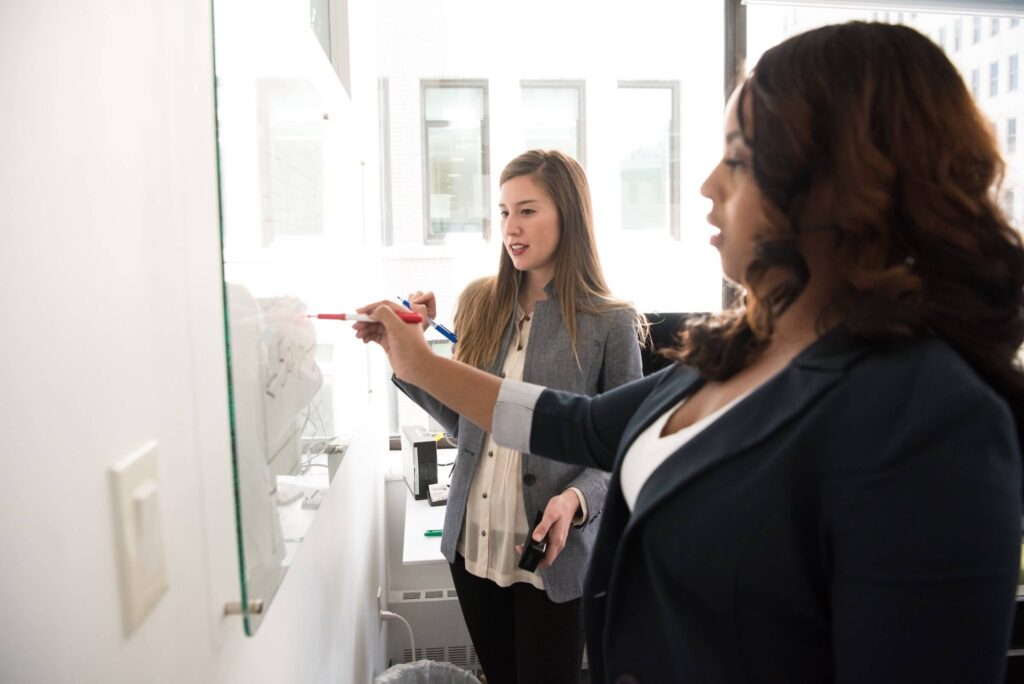Over the years, companies have tried various strategies to boost employee performance in an overall effort to increase company growth and retention. From bigger paychecks to the prospects of corner offices and 401k plans, all of these can prove to be healthy motivations. But the most important thing in any career path is learning.
These days, employees are more aware of the importance of being adaptable in today’s fast-paced world of volatile markets and ever-changing economies. One of the best ways to make themselves indispensable is to keep learning.
While encouraging the continued learning and growth of employees isn’t a new idea, emphasizing internal, or peer-to-peer learning in addition to an occasional professional conference is a relatively new tactic. Tuan Bach, Application Development Director at SSENSE and head of the internal training program, SSENSE University, has noticed that peer-to-peer learning not only improves employees’ skills but also boosts productivity and motivation.
When Tuan Bach moved to SSENSE a year and a half ago, he initially adopted a traditional approach to training employees. At the time, the SSENSE engineering department was in need of initiative to increase employee engagement. Bach started making note of the existing situation, looking for ways in which he could improve the learning culture. He identified knowledge gaps and found conferences and training classes that might be applicable to the various teams. But in this process, he realized that traditional learning procedures weren’t exactly effective. These workshops and conferences, while helpful from a basic product or language overview, were typically company-agnostic tutorials. What the SSENSE engineers needed was to understand how a particular product or language was being used at SSENSE.
After conversations with Marko Gargenta, founder of PlusPlus, Bach decided that it would be a far more effective process if they created supervised platforms for employees to interact and peer-review their work. He pitched the idea of SSENSE University as a much-needed engineering training where employees could learn from each other as well as study trends and advances together.
As Bach says, SSENSE University wasn’t a plan to replace professional development conferences, but to supplement.
“Conferences are good for networking and learning the basics of new technologies. But for most engineers, a one-hour session at a conference about the specifics of how to use a technology is far less valuable than learning how that particular concept is applied at your company. The real question is ‘How can I onboard people easily and teach them not only how NodeJS works, but how we use NodeJS.’”
His plan for SSENSE University was approved and since its founding, it has helped develop the SSENSE engineering workforce. The peer-to-peer learning interaction created by SSENSE University has helped share ideas and track growth. It’s become an evaluation tool as well as a learning tool for employees. It’s also a great way for employees to offer feedback and explore new tooling options together.
Bach explains: “In addition to being a great tool for onboarding, SSENSE University is a good tool for taking a pulse on the adoption of new technologies and tooling choices that we’ve made recently. It’s a great way to train folks on new tools that we’ve adopted, as well as an opportunity to make a case for different tooling.”
While the training budget is now focused largely on these internal training classes and peer-to-peer learning, Bach is quick to remind us that balance is vital. External conferences and classes are still important for the career progression of SSENSE employees, and Bach’s team actually uses SSENSE University to make sure that knowledge gained at outside events is distributed among the other employees.
“We ask everybody who has attended conferences to come back and host sessions to distill what they learned at the conference back to their colleagues,” he says. “The result is extremely positive because it creates a sense of community.”
The mission of SSENSE University goes beyond just onboarding and training. It impacts SSENSE’s culture, hiring practices, and employee retention. While it’s integral to their learning culture, it also strives to craft a vibrant engineering culture that attracts, grows and empowers world-class talent to deliver a robust and scalable technology stack, which is central to fulfilling SSENSE’s ambitions.
As more companies adopt peer-to-peer learning strategies, this common theme has revealed itself: it’s not just about the training opportunities. It’s about something far nearer and dearer to our hearts at PlusPlus and SSENSE: empowering engineers to do their best work.
Interested in learning more about technical roles that SSENSE is hiring for? Check out their careers page.







